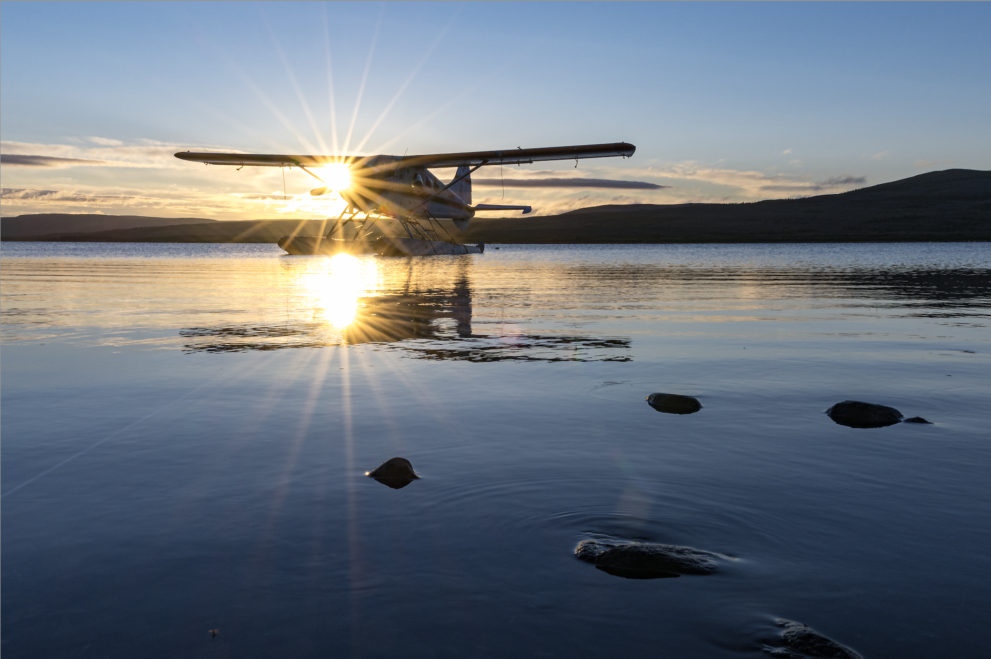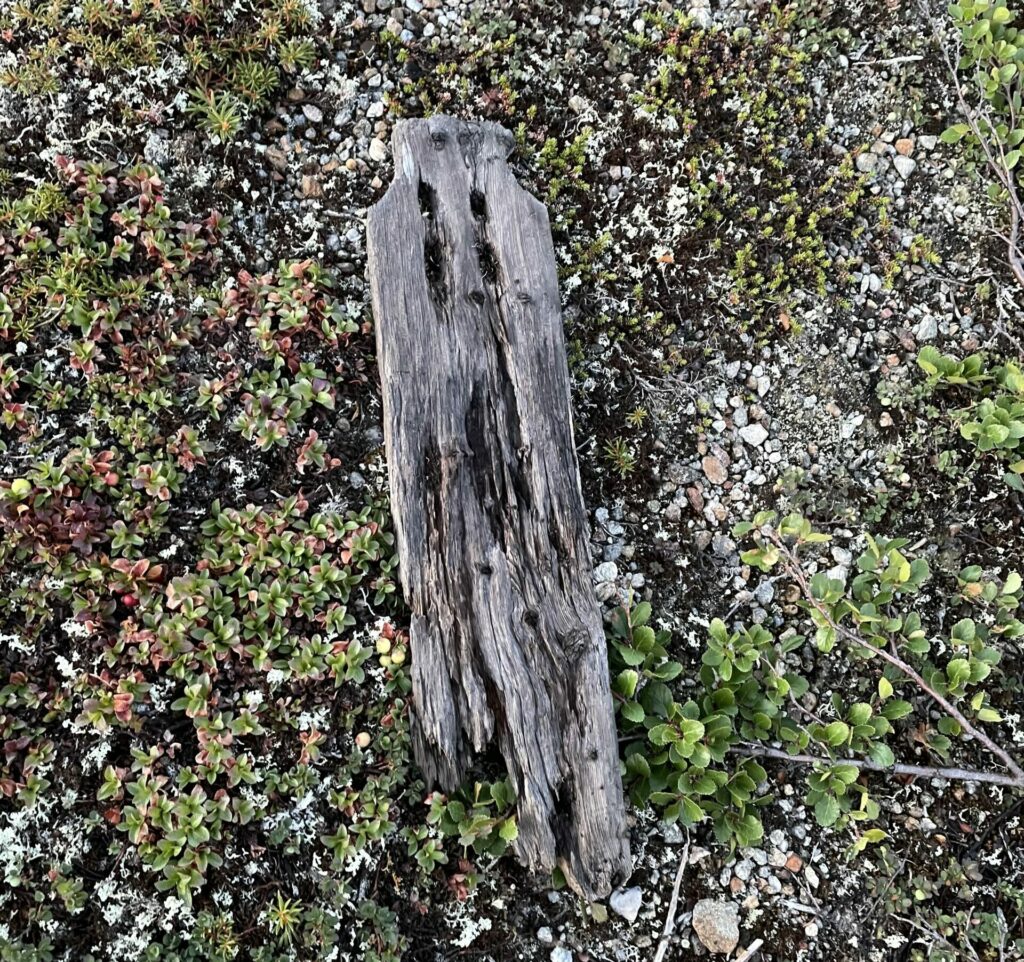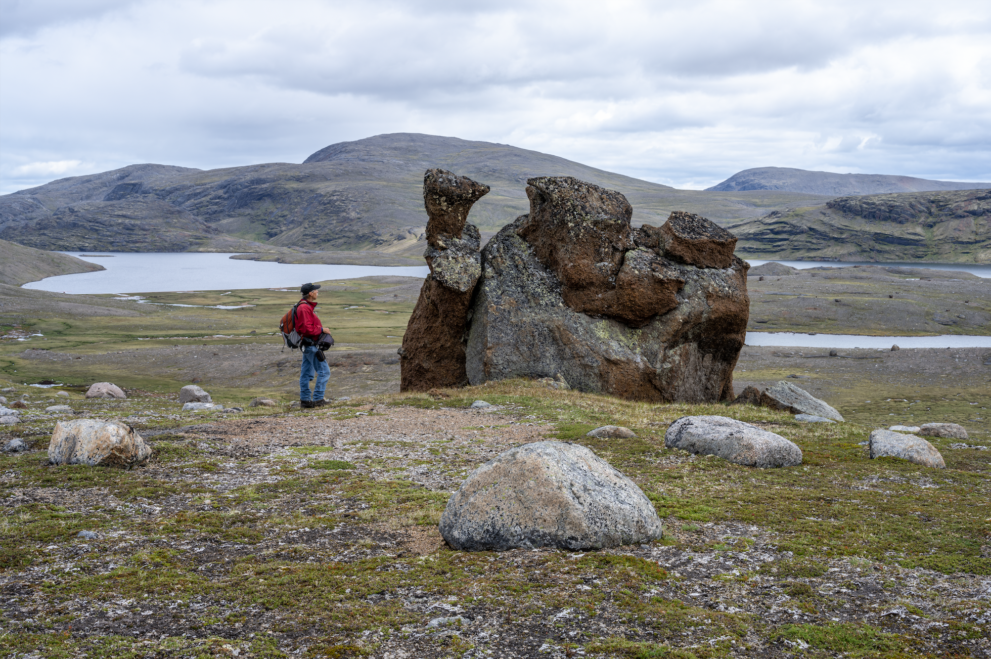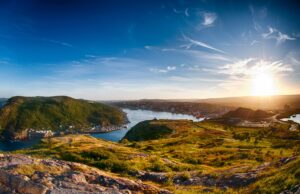I. Put. My. Phone. Away. Slowly.
Bend. Further. Down.
Pretend. To. Eat.
The bear moves along. Lagacé is undaunted, though, and keen to get the photographers a shot from the other side of the bear with the camp as a backdrop. And so the photographers in the group set off to circle the animal from the opposite direction. They make great progress as the bear continues to meander through the scrub, stopping periodically to graze.
The photographers are getting their shot — bear, watchers, camp — when us watchers spot something else. A caribou. It’s trotting along slowly just beyond the lensmen, so close to them that it’s hard to believe they can’t hear it. Of course, we attempt to subtly signal to them — so as not to upset the bear — to turn around. But the photographers aren’t picking up our message and the caribou lives up to its moniker, ghosting on beyond them.
And so, while there’s no photographic evidence, in that moment I tick the caribou box on my bucket list! The whole encounter, bear tracking and caribou drive by, is a highlight of the trip, though there are numerous special moments: the half-day hike to a four-storey waterfall and fresh trout shore lunch; the boat ride up the George to an eagle nest; the fat biking on the old airstrip across from the lodge; and the float plane trips over the dramatic Fraser Canyon and along the fjord walls in the Torngats. The collaboration between Wedge Hills Lodge and Golden Peninsula Tours is a truly superb geographic adventure to the wilds of Quebec’s Ungava region and Labrador’s Torngats.
















